How to Store Fresh Mint (And Make Your Fresh Herbs Last Longer)
You love fresh mint but it goes bad so fast. Learn how to store fresh mint and other herbs using these methods so they can last you several weeks, and in some cases, months!
Have you ever grabbed a bunch of fresh mint from the grocery store or an herb garden, envisioning all of the exciting things you’ll make with this fragrant herb? A digestive tea, mojitos, chocolate desserts, watermelon and feta salad, fresh pesto, salad dressings—the options are endless. Which is why it’s pure heartbreak when your mint wilts just days later (and likely before you even get to use it).
While wasted herbs are tragic, here’s the silver lining: you’re about to learn a few simple tricks to store fresh mint and increase the shelf life of other herbs for up to several weeks or months.
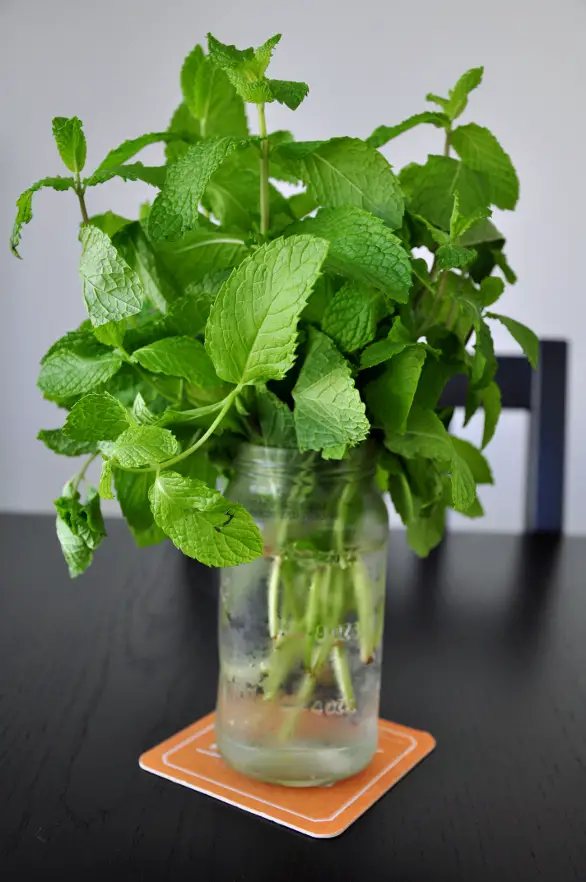
Do you see the gorgeous bunch of mint above? It had been staying in this fantastic state for ten days since I brought it home, and it was still going strong. Actually, it lasted for another week before I finished it up. I wish I had taken another photo for you to see.
Using the tips I’m about to share with you, I was also able to keep basil fresh for three weeks—yes, weeks!
If you’re ready to never waste fresh herbs again, keep reading. I’ll cover how to store fresh mint and mint leaves in your fridge and all of the different ways you can store fresh herbs to help them last weeks and in some cases, months.
[thrive_leads id=’13056′]
I’ll also cover how to tell when mint has gone bad and many other golden nuggets for getting the most out of fresh herbs.
How to Store Fresh Mint
Method #1: Treat Mint Like Flowers
Have you taken care of fresh flowers before? If so, then you already know how to store a bunch of fresh mint. That’s right: the secret to keeping mint looking hella fresh for weeks is to treat it almost like you would a bouquet.
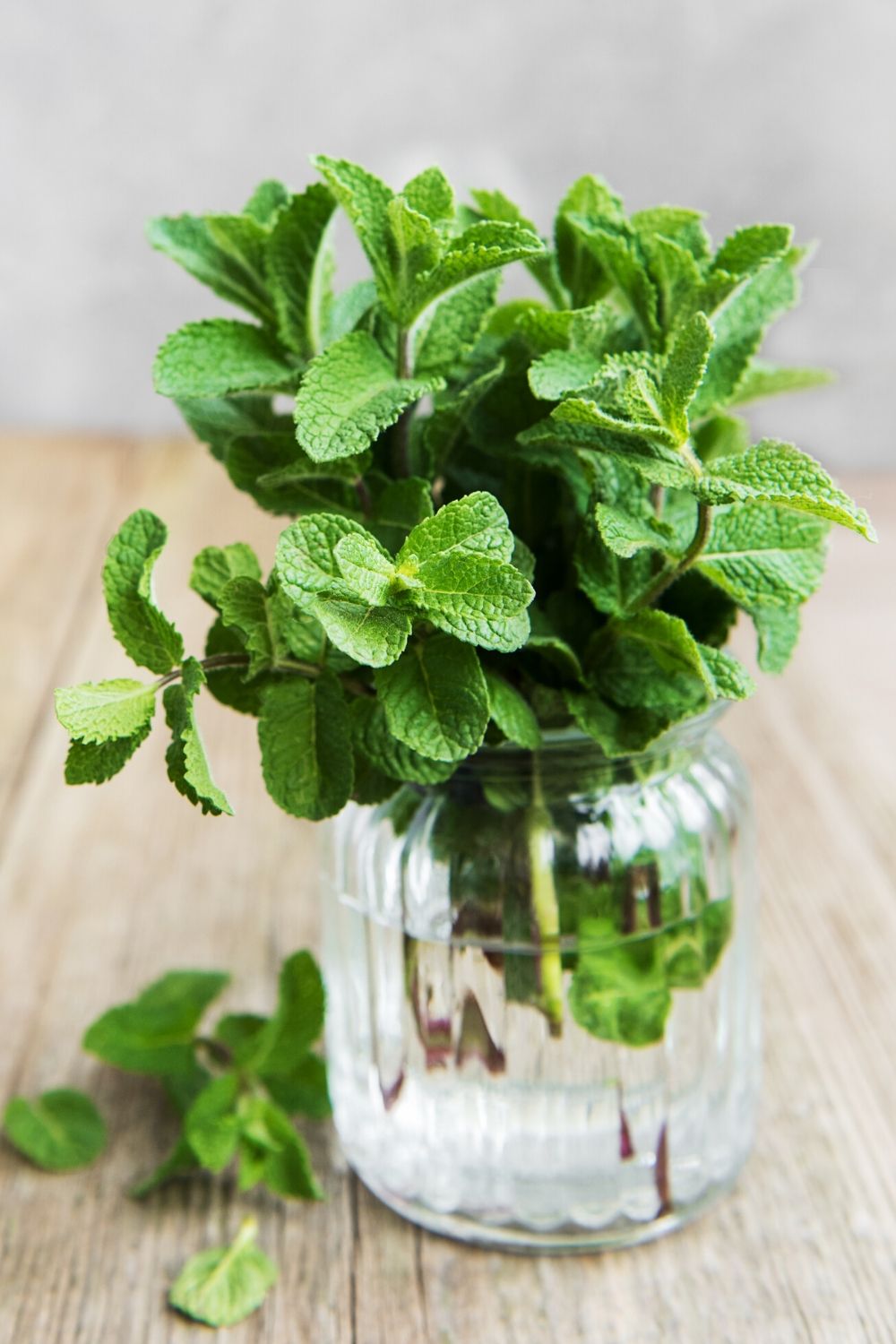
- Remove the rubber band that holds the bunch of mint together.
- Trim the end of the stems and cut off any leaves that are close to the ends. This is important so they don’t get submerged in water, which makes the mint spoil quicker. This also gives the stems more room to soak up the water, which increases its shelf life. (You can use these leaves for cooking, or if you don’t have an immediate use for them, refer to the next method.)
- In a relatively tall container such as a Mason jar or mug, stick the mint stems in and add enough water to cover the cut ends.
- Cover this little contraption loosely with a plastic bag and keep it in your fridge.
- This is an important step! Change the water every two or three days. This will help maintain freshness, prevent bacteria growth and the yucky, rotten smells that can come with that.
Note: This method can also be applied to storing fresh scallions, parsley, and basil (except basil doesn’t need to go in the fridge).
Method #2: Wrap Mint Leaves with a Damp Paper Towel
If you’re storing only mint leaves, here’s how to keep them fresh for at least two weeks. All you need is a damp paper towel. This method works for most fresh herbs. Personally, this is how I store cilantro (which is notorious for turning brown and sludgy within days), and it works like a charm.
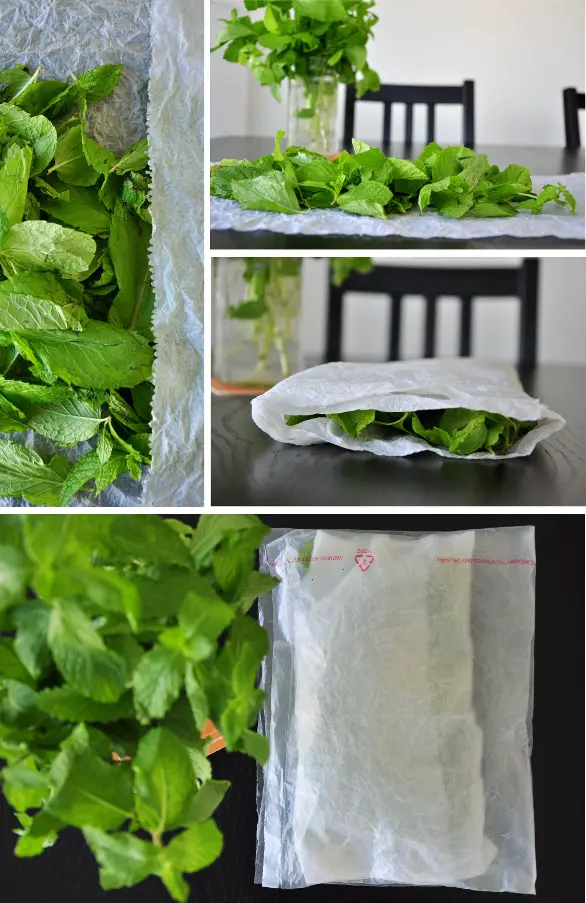
- Gently wet one or two paper towels (depending on how many leaves you have) and wring out the water until the paper is just damp.
- Lay mint leaves on the paper towel and gently wrap. As you can see, being gentle is key here! You want the paper towel to be loose enough so that the leaves don’t get crushed, but tight enough so that the leaves don’t fall out when you lift up the wrap.
- Place the wrapped mint into a plastic freezer bag. Make sure the plastic bag is big enough to avoid crushing the leaves. Seal and place in the fridge.
How to Store Fresh Mint Leaves in the Freezer (2 Quick and Easy Ways)
When you want to keep fresh herbs for more than a few weeks—perhaps even months—enter the freezer method. This is the perfect solution if you don’t want to go out and buy fresh mint every time you crave a mojito or aromatic pasta sauce.
Method #1: Freeze Mint and Other Fresh Herbs in Water: Ice Cube Method

- Sort through the fresh mint leaves to make sure all stems and any damaged leaves are removed. Rinse and dry with paper towels or allow them to air dry.
- Pull out an empty ice cube tray and place two to three mint leaves into each section, filling it about halfway.
- Fill the remainder of each square with cold water and place it in the freezer.
- Once frozen, remove the mint ice cubes from the tray and store in freezer bags for up to three months. Don’t forget to write the date on the bag.
- You now have single-use herbs at your fingertips. To use, place the ice cubes in a bowl or glass until it melts, then strain to separate the water from the herb.
[thrive_leads id=’13056′]
Note: Delicate herbs like basil, dill, chives, chervil, tarragon, and parsley don’t retain their flavors well when dried, so the ice cube method works well for these herbs too. Instead of using water, you could also freeze them in chicken broth. This is one of my all-time favorite savory meal hacks.
Method #2: Freeze Mint and Other Fresh Herbs Bare: Baking Sheet Method
If you leave fresh herbs attached to the stem, many of them retain their flavor just by being stored in airtight containers or a freezer bag. This method works for mint, dill, sage, chives, thyme, and rosemary.
- Spread rinsed and dried herbs in a single layer on a baking sheet or large plate and place in the freezer for two to three hours.
- Once frozen, transfer to an airtight container or freezer bag and use as needed. Store for up to three months.
Method #3: Purée Fresh Herb Leaves
This method is as delicious as it is effective, but it’s strictly for savory recipes (no happy hour here). You’ll need garlic, extra virgin olive oil, and a few small jars. Baby food jars or small Mason jars are perfect.
- Wash and dry the fresh mint (or other herb) leaves.
- Purée the leaves in a food processor or blender with fresh garlic and a little extra-virgin olive oil.
- Fill small jars with the mixture and put the jars in your freezer.
Not sure what to do with an overflow of frozen mint cubes or sprigs? Frozen mint and mint cubes can be used in pasta sauces, soups, all kinds of frozen drinks, and desserts. You could also add lemon and a few frozen mint cubes to hot water to make a post-dinner digestive tonic.
When fresh herbs are out of season, these small portions are perfect for flavoring casseroles and marinades and for topping meat, poultry, and fish dishes before baking. All in all, freezing herbs with any of these methods is a great way to add a variety of fresh goodness to your cooking in all seasons.
How to Dry Fresh Mint (Two Best Ways)
Another method to store fresh mint long term is to dry it. You can do this right in your kitchen with a dehydrator or conventional oven.
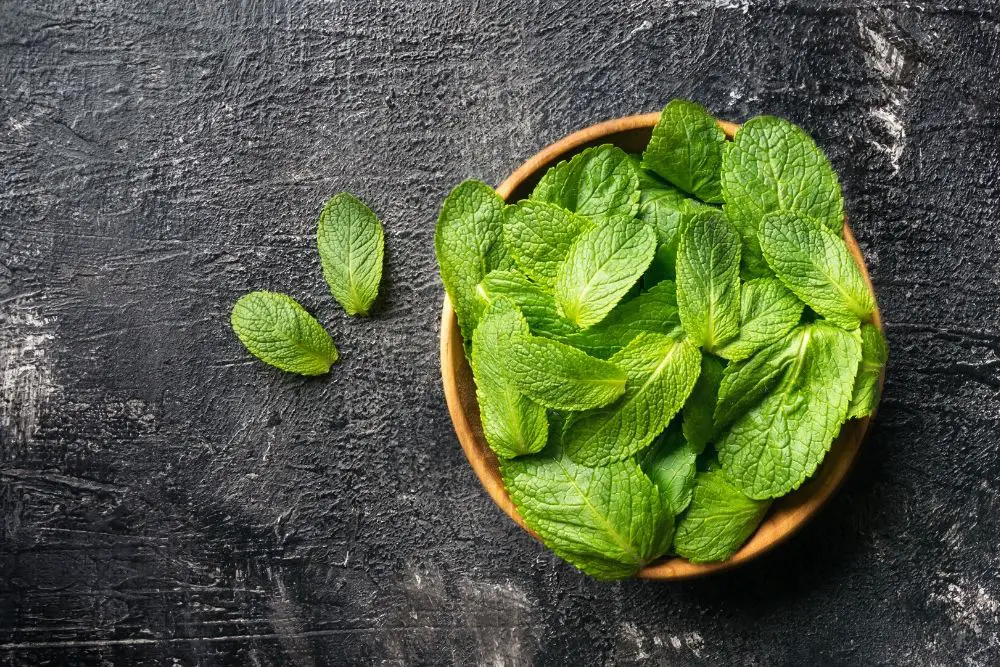
Method #1: Oven
This method is courtesy of Spruce Eats.
- Wash and thoroughly dry the whole mint (including stems) with absorbent towels.
- Once the mint is dry, remove the leaves from the stems.
- Spread mint sprigs out on a baking sheet in a single layer and place in the oven on low heat (no higher than 180 degrees F to prevent loss of color and flavor).
- Dry for two hours, checking every fifteen minutes or so. You’ll know the dried mint is ready when the leaves start to crunch and crumble.
- If your mint isn’t dry at the two-hour mark, don’t worry. They can take up to four hours to dry completely. Just keep checking in on them every fifteen minutes (to ensure they don’t burn) to see if they’re ready.
- Store the mint in an airtight container away from heat and light.
Method #2: Dehydrator
- Wash and dry mint thoroughly, removing all excess moisture. Hang upside down to dry for a few hours or dry with a paper towel, if necessary.
- Remove mint leaves from the stems, spread out evenly on a tray in a single layer, and set the temperature according to your dehydrator (the time required will be anywhere from one to four hours).
Can You Air-Dry Mint?
You could air-dry mint if you wanted to, but it’s not the best option. Since mint has a high moisture content, it retains its flavor better by being freeze-dried or dehydrated.
However, herbs like oregano, dill, marjoram, rosemary, sage, and thyme have less moisture and can be successfully air-dried. Here’s how to do it.
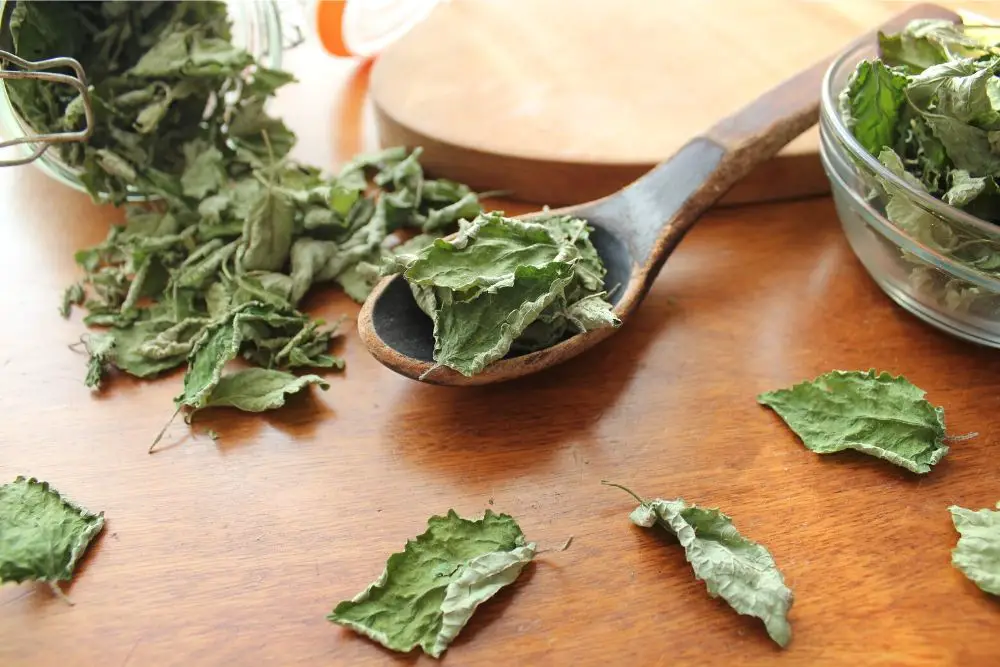
How to Make Dried Herbs Taste Better
Let’s face it, some of us believe dried herbs can’t hold a candle to their fresh counterparts. But there’s a trick I’ve found to help “activate” dried herbs flavors more. Simply rub them between the palms of your hands for 30-60 seconds before using them. The crushing action helps release the flavor.
How to Tell if Fresh Mint Has Gone Bad
The tell-tale signs of spoiled herbs are discolored, wilted leaves—but sometimes mint is still not completely expired in this state! A better indication of whether fresh mint and other herbs have gone bad is to give them a little sniff.
Fresh, frozen, or dried mint should have a powerful, cool, minty-fresh scent. Spearmint should smell similar to peppermint but maybe a little more pungent (which doesn’t mean it’s gone bad—that’s normal).
Note that if fresh herbs are wet or exposed to moisture, they can go bad and turn moldy and mushy quickly. This is when you’ll want to compost them. On the contrary, if mint leaves are just slightly browning while dry, they should still be okay to use as long as they don’t smell off.
Uses for Mint
Now you have enough mint to last you for weeks, if not months. What else can you do with this fragrant herb? Here are some of my favorite ways to use mint.

- Refreshing Mint Tea (hot or cold) when I feel a cold, stomach ache, indigestion, or headache coming on
- Green Pineapple Smoothie
- Watermelon Mint Feta Salad
- Thai Beef Salad
- Homemade Tzatziki Sauce
- Classic Mojito Recipe
.. You may even be interested in these Top 10 DIY Mint Beauty Products.
The Takeaway
No one should ever have to stop buying fresh herbs for fear of having to waste them. Having your herbs last for weeks or months is totally possible.
If you want to store fresh mint and other herbs in the fridge, store them in a glass jar and treat them like a bouquet of flowers. Or, store only the mint leaves between sheets of damp paper towel, and they will keep for two to three weeks.
If you want your mint to last months instead of weeks, you can store it in the freezer by freezing mint whole on a cookie sheet or chopped mint in an ice cube tray with water. If you’re planning to use mint for savory recipes, you can also create a delicious olive oil, mint, and garlic puree to store in the freezer for several home-cooked feasts.
Well, that’s all for now! I’m sure there are many more ways to treat fresh herbs in order to help them last longer and prevent unnecessary waste. I’ll be sure to add other ways as I discover them. If you ever come across one, I’d be so grateful if you shared it!
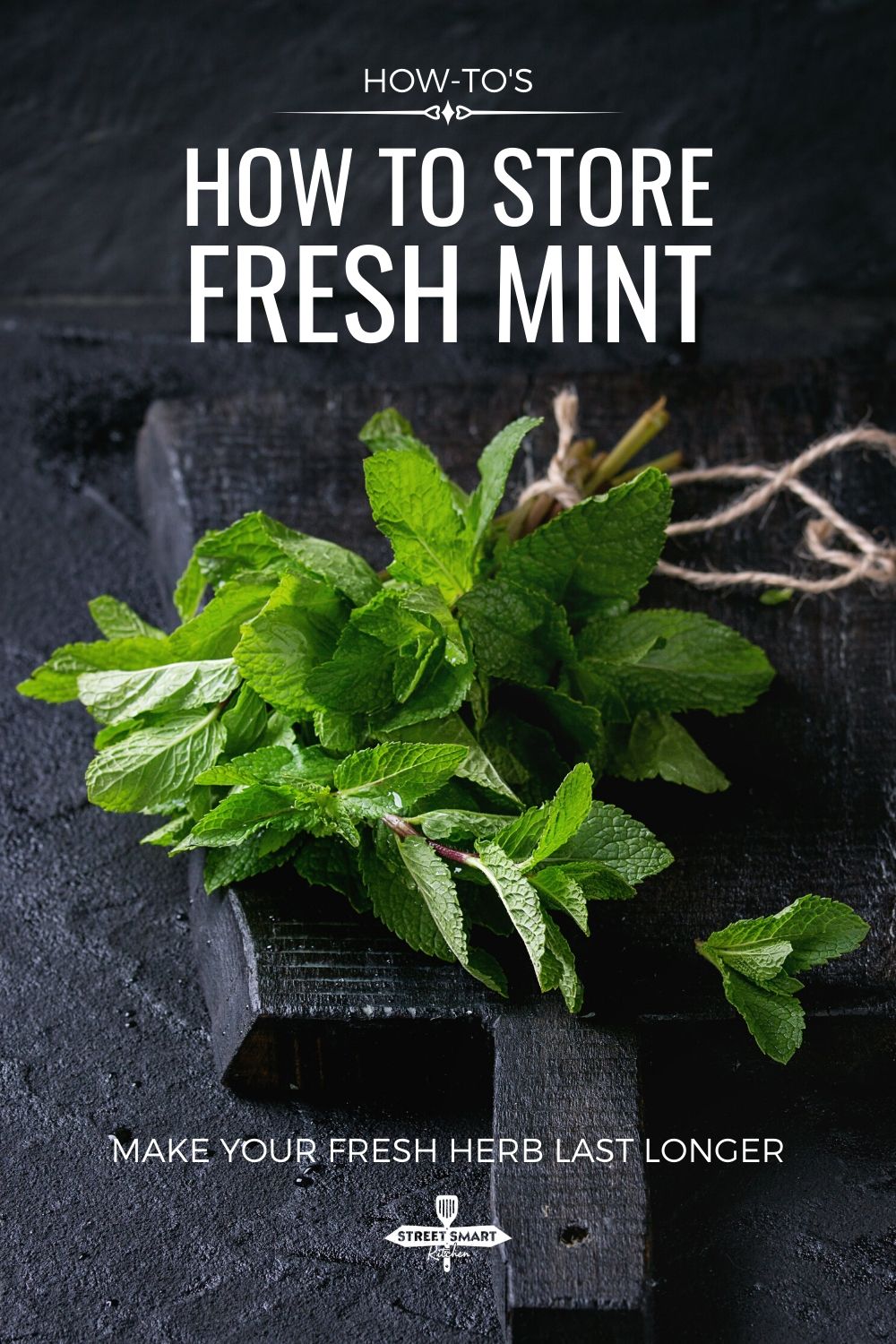
[thrive_leads id=’13056′]
About the Author
Sharon Chen is an Integrative Nutrition Health Coach and author of the Complete Sous Vide Cookbook. She believes food not only brings healing but also connection. As the creator of StreetSmart Kitchen, she aims to make meal prep easier than ever and help you find balance, ease, joy, and simplicity in the kitchen as you improve your well-being.




Great article you shared, Thanks for sharing such type of precious article.
Pingback: The List Of 10+ Can You Freeze Fresh Mint Without Water
Can you dry fresh mint and put it in glass container to store? For how long? I use it in homemade dog treats. Thanks.
I dehydrate my mint and my dill weed in the microwave. Wash the leaves and put into a glass plate. Put into the microwave a 1.5 minutes at a time. Once you notice the plant crubbles you can stop. Let it cool and then crush it into a jar. seal and it will be fresh all winter. It works great and takes no time at all!
Pingback: Easy Quinoa Lentil Salad with Lemon Vinaigrette - Foolproof Living
lovely helpful resource, thank you! a housekeeping note, the first link goest to a 404, here is the current URL: https://www.streetsmartkitchen.com/how-to-store-fresh-basil-in-your-kitchen-for-3-weeks/
Hey Laurel, thanks for letting me know. I’m investigating. Housekeeping is a big task. 😛
Thanks!
Great ideas!!
I loved “other ways” #1 & #2
How can you tell if mint has gone bad?
I just found this post and thus didn’t do the things you recommended. I bought fresh organic mint a while ago. It’s expiration date is March 7th – so 20 days ago. It has been in the refrigerator since. Right now, it isn’t wet, overly mushy, or black but many of the leaves have turned brownish purple.
It smells fine. Is it safe to use? I realize it may not taste as good as it would if it were fresher, but I still want to use it rather than throwing it out.
you already know it. leaves turning brown while dry is fine. let them dry completely and you have dry mint. hang it somewhere and use it whenever you need it.
i never go by the dates printed. dont let others take away your sense of touch, look & smell
I have never made dried mint before. This is an interesting idea. Thank you for sharing, Salman!
For method 2, Loose mint leaves should be stored or along with stem??
Hi Nidhi, if the stems are long enough to be put in a container with water, then go for method 1. If not, go for method 2. You don’t have to get rid of the stems. Hope that helps.
Pingback: Mocktail Recipes Drinkers and Non-Drinkers Will Love - The Lazy GastronomeThe Lazy Gastronome
thanks, I bought some mint today.
hi,
can i make the paste and deep freeze it,
how long i can use it.
Thank you so much for the tip to store Mint. Do you wash the leaves before storing and store it as a bunch ot loose? I’ve removed the leaves from the stem and stored as per Method 2, however I’m washing the leaves prior to use because j feel washing them earlier may reduce the time they last? You
Hey Noreen, I actually don’t wash the leaves before storing. Washing before using is probably on the safer end.
I use this trick with basil, mint, parsley, oregano, and cilantro. Basil, mint, and oregano are likely to grow roots when left in fresh water and you can plant them when the roots are vigorous enough. Consider an indoor herb garden! Once the roots are established in soil the plants can withstand heavy clippings. I put them in plants I take in for the winter (my sage plants……) and they do quite well. Basil tends to get fairly leggy and tries to set seeds so I clip off a hardy stem and start the process over again.
I have had great luck with freezing basil leaves whole. Wash, set out on a towel to dry, once dry lay them single-file on a piece of plastic wrap. Begin rolling the wrap on the short end, rolling the leaves in with the wrap. It will need to be tightly rolled enough to keep the leaves in place but not so tight as to crush them. You will end up with a roll of leaves. Fold this over to fit into a zip seal bag, get out as much air as possible, and freeze.
To use, unroll to reveal as many leaves as you need then either trim or re-roll the plastic and return to the freezer.
Because the leaves have been frozen they will be limp (and with basil at least, discolored) when you use them but all of the flavor will be there. Because of this they are good for anything cooked (pasta sauce), put through a blender / food processor (dressings, smoothies), or in drinks.
I am going to try this with my fresh mint this year and expect similar results.
Mahalo for the info. all this time I’ve been wrapping my veges w/a dry paper towel thinking that would keep them ‘going bad’. I put my fresh mint in a cup of water and put in the fridge~~next day half of it turned black and wilted……..I put them in the garbage disposal w/some lemon juice to make it smell good. I will try the ‘wet paper towel method…….I do so LOVE fresh mint on my fish fillets & iced tea. Mahalo*
Cool. Hope the wet paper towel method works for you. Let me know how it goes. Cheers!
Thanks for all the info. But will cut mint turn black once it’s put in a jelly or salad or whatever. If so how can it be prevented???
Hi Nancy, if you cut mint off the stems and use it for salad, it’s best that you enjoy it when it’s still fresh. If you have a big bunch of mint and can’t use it all at once, hope this tip can help you preserve mint for longer. Cheers!
I doing exactly wat u said and let’s hope it will work out well..thanks for the tip.
Thanks I did not know that you you can put the herbs in water.
What I do is cut off some of the stems and wrap it around with wet paper towel and put any type of small plastic bag no top
you can also us the bag you put your produce in, it will do just the same no need to buy baggies.
Hey Cerrina! You are absolutely right. That’s exactly what I do with loose mint leaves. It works great. 🙂
Wrapping salad in wet towel works perfectly! I can keep them fresh for over a week 🙂 I didn’t know that the same applies to mint! Just brought mine today and putting in a jar like flowers 🙂 Thanks!
Oh, I didn’t know the same applies to salad. I must try that from now on. Thanks, Beata! Love the idea exchange. 🙂
Thanks for posting these great ideas….tried it with mint & worked beautifully. Any suggestions for fresh rosemary?
Rosemary…hmmm…not at the moment, but I will find out. 🙂 Glad to know the mint tip worked well for you. Thanks for the comment!
I cut stems from my rosemary bush, place in a zip lock bag, get the air out, seal it and straight into the freezer. It freezes well and stays green and flavoursome for months.
Awesome tip, Simone! Thanks so much for sharing. I am gonna have to try it.
Thank you for the tip on mint leaves, unfortunately it came a little to late for me. I just brought the mint leaves yesterday and left them out on the counter overnight and this morning they look a week old, so i will purchase another bunch today and use your storing method. Thanks a million:)
You are very welcome Elaina! Hope your new bunch of mint lasts longer with this tip! 🙂
Thank you, I bought some mint leaves at the grocery store and ended up throwing half of it away because it turned black. I was trying to figure out what to do. So thanks!
Thank you SO MUCH! I knew I could do this with asparagus and just tried it with cilantro (worked beautifully – they’ve been in the fridge a week and still kicking). I just brought home some mint and thought, “gee, that trick might work (in a jar of water), I wonder if they’ll get mildewy.” Seeing how it’s been a success for you, I’m going to give it a shot. Thanks again, Jen
Awesome!! Glad that the trick is working out for you, Jen! Cheers ~
Thanks for sharing the tips it works.
Thanks Faiza for your comment! Glad that the tips are helpful! 🙂
Thank you so much for posting this! I tried it this week and wow! The mint leaves are still kicking. I juice Tuesday through Friday and my mint leaves would only last 3 days at best. I’m so glad I found your blog. Many thanks. =)
Awesome!!! Thanks a lot David for sharing your experience! So glad that your found this tip helpful! 😀
Thank you for the great tip with the paper towel and refrigeration. 🙂
No problem Maria! Glad that you like the paper towel method! It’s pretty convenient. Every time I make a lemonade, I just grab a few leaves and throw them in the beverage. Makes it yummier. 😀